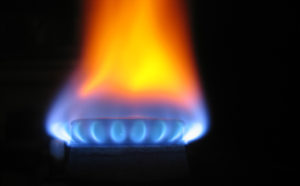 Natural gas swung between gains and losses on Thursday as investors weighed an expected bullish inventory report by the EIA against arriving Canadian weather systems that would significantly ease cooling demand through early July.
Natural gas swung between gains and losses on Thursday as investors weighed an expected bullish inventory report by the EIA against arriving Canadian weather systems that would significantly ease cooling demand through early July.
Natural gas for delivery in August traded 0.18% lower at $2.777 per million British thermal units at 8:25 GMT, shifting in a daily range of $2.801 – $2.773. The contract added 1.3% on Wednesday to settle at $2.782, snapping two days of losses.
The Energy Information Administration is expected to report today a build below the average as lower supply due to pipeline maintenance offset a cooling that tropical storm Bill brought last week and Canadian weather systems over the North. Inventories are expected to have risen by 77 billion cubic feet, compared to the five-year average gain of 86 bcf and the year-ago one of 110 bcf.
According to NatGasWeather.com, natural gas demand in the US will be moderate compared to normal during the next seven days. A weather system developing over the Midwest today and tracking eastward will bring thunderstorms and a slight cooling. The rest of the US will remain engulfed by very warm to hot temperatures with widespread highs in the 90s and locally 100s, leading to a smaller-than-average inventory build to be reported next week.
Initial estimates for July 2nds report point to a stockpiles gain of 71 bcf for the seven days ended June 26th, compared to the average of 75 bcf and a gain of 102 bcf during the comparable period last year.
However, high pressure will lose dominance to cooler Canadian weather systems on Friday going into next week. This will result in considerably lower temperatures across the Midwest and East, while cooler air also spills into the Southeast to ease hot conditions of the past few weeks. The West will continue to experience widespread highs in the 90s and 100s, NatGasWeather.com said, remaining a source for strong cooling demand.
Additional Canadian weather systems carrying below-normal temperatures, showers and thunderstorms are anticipated to track across the central and eastern US going into July. Florida and portions of the Southeast Coast will be the only regions of the eastern half of the US that will be warmer than usual, significantly easing cooling demand compared to the current week, while the West remains very warm to hot.
The impact of these Canadian systems will be reflected in July 9ths inventory report, expected to show once again a much larger than average weekly build. The five-year average inventory gain for the week ended July 3rd is 75 bcf, while stockpiles jumped by 94 bcf a year earlier.
High pressure might try to strengthen again over the East and North as the first week of July ends, but it still remains unclear how successful that push would be.
Readings
According to AccuWeather.com, temperatures in New York will peak at 83 degrees Fahrenheit today, 1 above usual, before easing to 70-75 degrees the following three days. Chicago will fail to exceed 70 degrees on June 26th-27th, 13 below normal, and will remain in the mid-upper 70s through July 3rd.
Down South, readings in Houston will max out at 90-93 degrees through June 29th, compared to the average 91, followed by a few-degree cooling during the following week. To the West, the high in Sacramento will be 102 degrees today, 13 above normal, with highs set to remain in the upper 90s and low 100s through July 9th.
Pivot points
According to Binary Tribune’s daily analysis, August natural gas futures’ central pivot point stands at $2.773. In case the contract penetrates the first resistance level at $2.812 per million British thermal units, it will encounter next resistance at $2.843. If breached, upside movement may attempt to advance to $2.882 per mBtu.
If the energy source drops below its S1 level at $2.742 per mBtu, it will next see support at $2.703. In case the second key support zone is breached, the power-station fuel’s downward movement may extend to $2.672 per mBtu.
In weekly terms, the central pivot point is at $2.859. The three key resistance levels are as follows: R1 – $2.958, R2 – $3.075, R3 – $3.174. The three key support levels are: S1 – $2.742, S2 – $2.643, S3 – $2.526.





